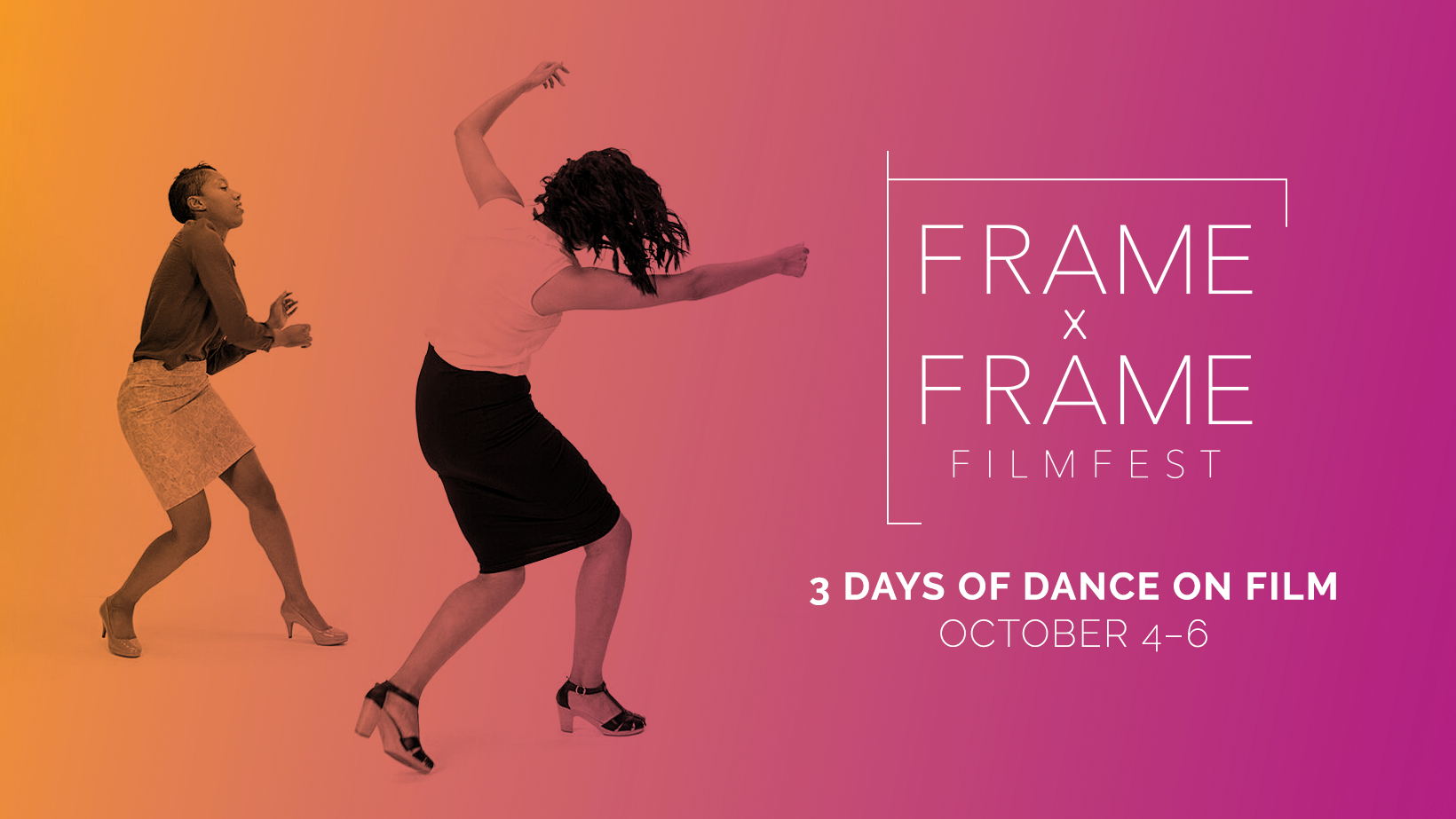Houston is a dance town; readers of Frame Work know that. But do you know about the massive territory being explored at the intersection of dance and film? And are you aware that now, with the opening of the second annual Frame x Frame Film Fest on October 4-6, Houston is becoming a locus for the particular art of dance on film (also known as dance for film, dance film, and dance for camera)? #FramerNation, this is a new and exciting way to be involved with dance, and we encourage you to jump in as artists and audiences. To provide a head start on your education in this field, and/or to satisfy your deeper dive after viewing the films on offer, we have assembled recommendations from our FxFFF jurors and dance on film luminaries, Rosie Trump, Laura Gutierrez, and Lydia Hance.
Frame Work: Film-making and film-viewing friends, can you tell me some of the dance films – outside of the ones in our festival – that you find really exciting?
Rosie Trump: My favorite feature length dance on film is Blush by Wim Vandekeybus. I saw it screen at Dance Camera West in 2006 and it blew my mind. I also love Rosas danst Rosas choreographed by Anne Teresa De Keersmaeker and directed by Thierry de Mey.
Laura Gutierrez: Dance Documentaries really excite me. Most recent ones are Restless Creature by Wendy Whelan, and Bobbi Jene and a non documentary is Girl (2018) by Lukas Dhont
Lydia Hance: Right now I am really excited about ANIMA, directed by Paul Thomas Anderson and can be found on Netflix! I’ve always loved Pina. Feelings are Facts is a fantastic documentary about Yvonne Rainer, co-founder of the Judson Dance Theater who is a dancer and choreographer turned filmmaker.
FW: Can you recommend any books about dance or dance on film to help our readers explore the genre?
RT: I read a lot of books about dance history. Brenda Dixon Gottschild and Susan Foster are two dance theorists that completely changed how I think about dance. Misty Copeland’s biography is on the top of my reading list.
LG: Deborah Hay, My Body, The Buddhist is my favorite book about dance.
LH: I love books about community creativity and finding ways to engage people with dance in authentic and meaningful ways that validate all humans as artists. I love Liz Lerman’s book Hiking the Horizontal. Right now I’m reading Anna Halprin’s book Making Dances that Matter with the MultiGen Framers.
FW: Any other recommendations? Inspirations?
RT: The OA and Russian Doll. These are not films, but the best small screen cinema I have seen in a while. I am currently reading Lucia Berlin‘s Evening in Paradise. My last dance film was inspired by an essay in Kim Gordon’s Is it My Body? Selected Texts.
LG: seeing is forgetting the name of the thing one sees, a book by Robert Irwin.
LH: I’ve recently (finally) seen Junebug directed by Phil Morrison and i thought it was fantastic. I would recommend The Goldfinch (not a short read) for something fun and captivating, and I have been a fan of Virginia Woolf for many years.
FW: Thank you, dance-on-film gurus, and we’ll see you in the theater!
Rosie Trump is a dance choreographer, filmmaker, and educator. Her work is nostalgic in style, feminist, and deliberately understated. Trump’s dance films have recently screened at ADFs Movies for Movers, San Souci Dance Film Festival, Extremely Short Shorts at the Aurora Picture Show, the Utah Dance Film Festival, the Philadelphia Dance Film Festival, RADfest, andDance Film Association’s Long Legs Short Films. She is the founder and chief curator of the Third Coast Dance Film Festival. Trump is an Associate Professor of Dance at the University of Nevada, Reno. Rosie finds inspiration in pop culture, politics, and visual art.
Laura Gutierrez is a performing artist and choreographer and has been named one of Dance Magazine’s “25 to Watch”. Her most recent work “Center Aisle Blues” was named Best Placemaking of 2018 by Dance Magazine. She is a graduate of UNCSA and was on adjunct faculty at the High School for the Performing and Visual Arts from 2011-2019 where she is also an Alum. Since 2014, she has toured with Jonah Bokaer Choreography. Laura’s inspiration comes from her family, politics, history, nature, traveling, architecture and art.
Lydia Hance is the Founder Artistic Director of Frame Dance. She has been named an Emerging Leader by Dance/USA and has led Frame Dance in performances from the Galveston pier onto the METRO light rail, in the backs of U Haul trucks, downtown tunnels, and into museums, stages, and warehouses for the past ten years. A champion of new music composers, her work deepens interdisciplinary and multigenerational collaborations, and investigates the placement of dance in our lives. She is a choreographer, curator, filmmaker, educator, and dance writer. Her. She holds degrees in Dance Performance and English Literature from SMU and trained at the Taylor School, Graham School, Tisch School of the Arts, Limon Institute and SMU. Lydia is inspired by people’s stories, vulnerability, textures, the dessert, behavioral science, and new music.




